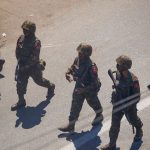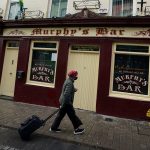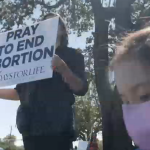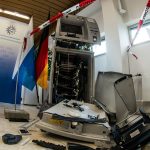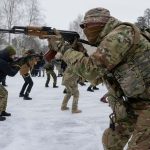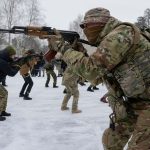It’s only an hour and a bit’s drive from Jerusalem down to Gaza, but it’s a journey into a different world.
The Israeli authorities who control the crossing into the narrow strip have refused all access for the past 11 days, but early this morning word came though that the Erez crossing was to be opened.
Aid, doctors, diplomats and journalists were to be allowed in.
Please use Chrome browser for a more accessible video player
We passed through the crossing exactly 12 hours after the ceasefire came into effect.
Yet, word was also reaching us of renewed violence at Jerusalem’s Al-Aqsa mosque. Would this mean that Hamas resumes its rocket attacks in response to ‘Israeli aggression’? It’s a tense time.
Gaza is home to two million people. The disparities with Israel and even with the West Bank are huge.
Some 60% of the population is unemployed, 70% are under the age of 30.
And that second statistic is so evident today because everyone is out in the streets.
It’s the first time in nearly two weeks that the Gaza population has felt safe enough to emerge from the homes, hospitals and schools where they were taking shelter.
Please use Chrome browser for a more accessible video player
Rounding a corner in these narrow streets we arrived at a place that was familiar.
Last week we had told the story of the Hadidi family.
A mother and four of her children had died at one in the morning, as they had celebrated Eid when their home was hit either by a misfired Hamas rocket or by an Israeli missile.
At the time of our report we’d used images filmed for us by our local Gaza team but now, being here ourselves, the enormity of the destruction became so clear.
Next to the rubble, plastic chairs had been set out in rows. It was a wake, not for the Hadidi family but for the Abu Hatibs who had died in the same building that night.
The two families had come together for Eid. In all, 10 people died in the building, all women and children.
At the heart of the wake, we were introduced to Alaa Abu Hatib, the father of the family, who survived with one of his five children.
Maria, who is four, sat emotionless on his knee.
“Until now she hasn’t spoken a word from the shock and horror,” Alaa said.
“She was on the third floor and we found her on the ground floor. We found her down on the floor. She’s still shocked, a little girl what she saw we, as adults, can’t handle it.
“They couldn’t handle what we saw for this girl, she’s still in a state of shock, she hasn’t uttered a word.”
Alaa and Maria have lost Yasmine, a wife and a mother, and Yusuf, Bilal, Mariam and Yamin, children and siblings.
Alaa explained that he had left the house briefly to buy bread, sweets and toys. The house, we were told, was hit directly without a warning. They have no idea why a residential building would be hit.
“We are just civilians here…” another man told us. “Do you think we would put our families in here if it was a military building?”
The troubling story of the Hadidis and the Abu Hatibs raises so many questions.
Was it an Israeli airstrike? And if it was, why was the building targeted?
Or was it, as the Israeli military insist, the result of a misfired Hamas rocket falling short?
The Israeli military has told Sky News that they have evidence which they will release soon to prove that they did not hit the building.
As we finished talking, another young man approached me. He spoke good English.
“I am an artist… would you like to see my work?” he asked me.
It turned out his apartment and studio were right next to the destroyed house. As he showed me some of his work, I asked how he was doing and whether he could describe how the past 11 days had been.
“My neighbours we are like brothers. We are like the same family. It’s very hard,” he says.
“I can’t talk. I am very sad. My mouth can’t talk. Can’t smile.
“I am thinking I will draw a painting, to draw all my feelings in this painting. So maybe the painting will have red colour and black colour.”
As he spoke, I could see him shaking. The trauma here runs deep.


